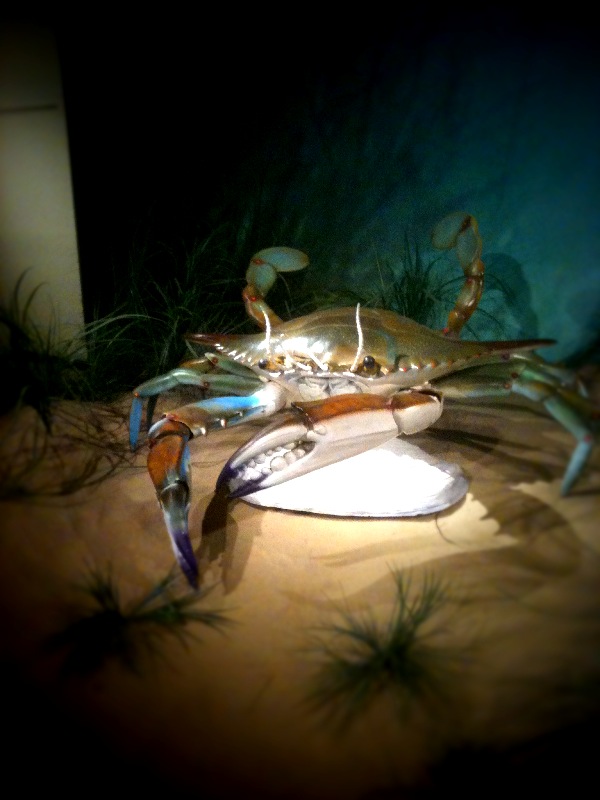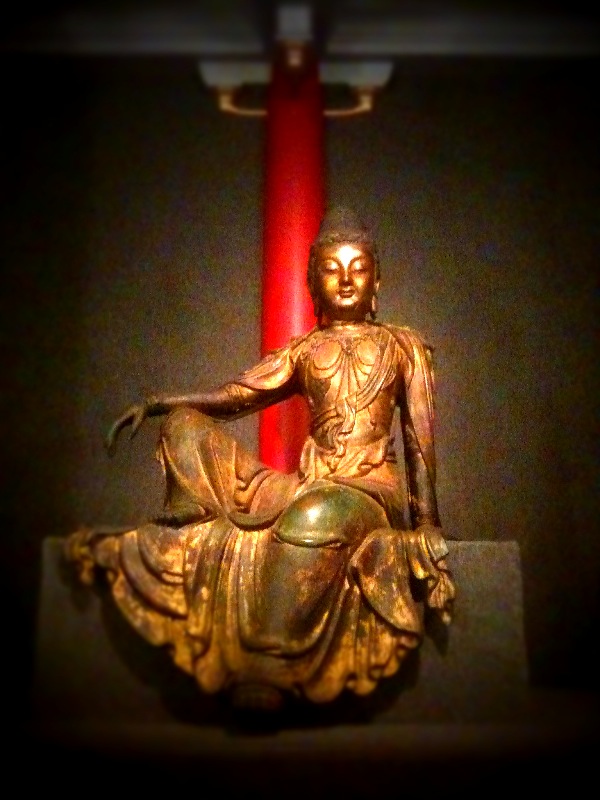This past weekend I traveled down to Baltimore for a quick visit to the Association of Science and Technology Centers Conference (ASTC). My main reason to be there was to attend a panel on best practices in University Partnerships, but while there I had to take in as many art museums as possible. I was pleasantly surprised that Baltimore had something to offer that was incredibly Rubin-esque in three different art museums.
Now, when one initially thinks of Baltimore, you might imagine our good friend the crab, as seen here at the Maryland Science Center.
This giant crab is truly a landmark at MSC, but just a short walk around the pier lands you at the American Visionary Art Museum.
I’ve been hearing about this museum for the past few years as a “must-see,” and I finally had the opportunity to adventure into an amazing world of outsider, visionary art. What made the trip even more exciting was a major exhibition called All Things Round: Galaxies, Eyeballs & Karma. Unfortunately, I wasn’t able to take photos on the inside, but as I entered the museum, I was treated by a wall of gold protruding hands holding Buddhist prayer wheels. Inside the exhibition there were two very familiar sections involving circles, one including traditional thangkas of Mandalas, and a great section on psychology that included a copy of the Red Book by C.G. Jung, and some stellar Jungain circles. The exhibition definitely imbued many of the cyclical topics that the Rubin Museum has handled including cycles of life and death, and cosmologies. I left the museum feeling, well …rounded.
In a marathon day of visiting both the Baltimore Museum of Art and the Walters Art Museum, I was happy to have two very different Asian Arts experiences. I started my day at the BMA (with a quick and delicious breakfast at Gertrude’s, BMA’s restaurant famous for crab omelets), received my free admission and free audio guide, and hightailed it to the Asian art room. Now, I have to admit that the BMA has a modest Arts of Asia section, but everything in the room was exquisite. I was especially taken by a large sculpture of Guanyin that was prominently displayed.
The audio description was delicately worded, and included an explanation that Guanyin’s eyes were not closed but looking down. As I sat on the floor to meet her gaze, I was overwhelmed by the uniqueness of this particular statue sitting in royal ease. A special feature of many stops on the BMA’s audio tours was extended content contributed by Baltimorean writers. The stop associated with Guanyin was a lovely poem about compassion. As I sat on the floor, looking up, and listening to the poem, I felt transported out of the room into a much larger space. It’s a very special experience, and I highly recommend taking a seat on the floor to get the full effect. The rest of the museum was delightful, but I had another stop to make, so was off to the Walters.
Situated in the historic district of Baltimore, the Walters Art Museum comprises many different buildings. As I looked at my map to find the Asian Art section of the museum, a friendly volunteer gave me a flyer with special instructions on how to get there. The Asian section is housed in an old mansion that is attached to the museum, and requires a bit of a pilgrimage to trek through multiple floors and staircases, but once you’re there, it’s spectacular. Throughout the museum, the Walters placed amazing family guides that interpret different parts of the collection. I was happy to see that the Asian section had its own family guide, and four types of audio tours: general collection tours, stops from the director’s tours, a children’s tour, and a music tour. Asia was well covered with all of these, and I especially liked a tour stop associated with a Ganesha sculpture as told by a drummer in the background. It’s not often that you find a large collection of Himalayan art within a large Asian collection, but the Walker had many beautiful thangkas and sculptures in every form. The rest of the Asian collection was housed a bit more formally in large parlor rooms, displayed as they might have been seen at the early part of the 20th century in a collector’s home.
Here are a few links to explore some of the places I described in this post. Do you have any other fond Asian Art memories of Baltimore?
Association of Science-Technology Centers







